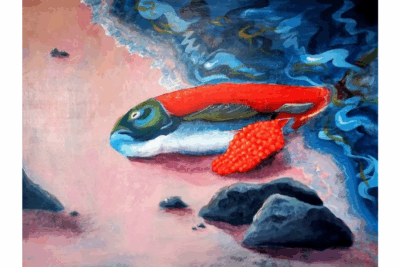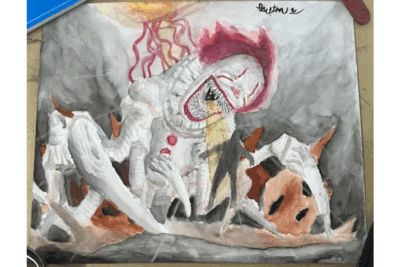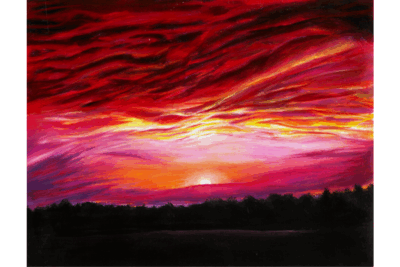“I feel like I can communicate through my art better than I can communicate through language,” said Anya Slabaugh, a junior art major from Kalona, Iowa.
While Slabaugh came into Goshen as a PJCS major, she quickly realized that wasn’t the path she wanted to take.“As passionate as I am about [peace and justice issues], I can’t face them and write papers,” she said. “When I’m dealing with them, it needs to be in a tangible way that my whole body is experiencing, not just my brain.”
So, instead of taking PJCS classes, Slabaugh decided to take a jewelry class on a whim. In high school, Slabaugh had enjoyed her art classes, especially because her art teacher was also passionate about social justice.
Jewelry ended up being Slabaugh’s favorite class, and she has since decided to focus on metalworking by taking classes in both jewelry and sculpture. She said, “I like metalworking best because I like it 100 percent of the time: I like the process, I like the end product and I like how tangible it is.”
Slabaugh now cites Kristi Glick and John Mishler, two of Goshen’s art professors, as major influences. She has also been inspired by the works of Marina Abramovic, a performance artist, Ai Weiwei, a filmographer, architect and activist and Barbara Kruger, a feminist 2D artist.
Slabaugh believes that “art should impact the way that we approach the world around us.” She said, “I want to make art that changes how people think and makes them react strongly. I try to challenge norms and expectations in my art.”
As part of this philosophy, Slabaugh has focused much of her work on social justice issues. “A lot of my art is conceptually based,” she said. “It is my personal wrestling with everyday social justice issues like sexism.”
When it comes to sexism, Slabaugh references one work in particular. “I did a boob necklace once. It’s an enamel necklace of life-size boobs.” As she made the necklace, Slabaugh thought a great deal about the way that the female body, and breasts in particular, are sexualized and commodified. She asks, “Why is that? What is the big deal?”
Slabaugh has also explored the role of technology in her artwork. She made an electrical outlet that was also a necklace and in reflecting on it said, “I was interested in how much people are constantly needing to charge things and how much technology affects life on a day-to-day basis.”
Slabaugh also referenced a second work on this theme: a power switch headdress. She said, “I was thinking about the idea of if you could turn your brain on and off and how convenient that would be.”
Slabaugh uses art to start conversations. One topic she is passionate about is mental health, and depression in particular. While talking about depression, she said, “It’s very common. A lot of people experience it and feel like they can’t talk about it.”
As a way of addressing this problem, Slabaugh created a self-described “fluff sculpture” which is currently located in the Good Library entryway. She said, “That was my way of expressing what depression feels like.” She added, “I believe that if there is visual representation of it, people will see that it’s okay to talk about it.”
Art has been an important way for Slabaugh to work through her own well-being. She said, “When I’m feeling worst and when I’m feeling best, I have this desire to do art. It’s something I need to do.”
When asked about her future, Slabaugh laughed and said, “I want to go somewhere hot and sunny.” Her goal is to be a full-time artist.
In the meantime, Slabaugh has been spending her summers teaching arts and crafts to youth at Crooked Creek Christian Camp near her home in Iowa. She works to counter the many messages that youth hear about needing their artwork to be pretty and perfect. She often hears phrases like “No, it’s not good enough. I don’t know how to draw right.”
In response, Slabaugh frames her sessions with the campers in ways that try to challenge the typical purposes of art. She said, “When I start leading an activity, I talk about how there’s not a right way to do things. I talk about how if you want, instead of trying to make it as pretty as you can, you can try to make it as ugly as you possibly can. That is totally valid.”
Slabaugh continues to be inspired in her work by the creations of other artists, including her cousin Ardy Woodward, a GC junior and Ida Short, a recent GC graduate.



